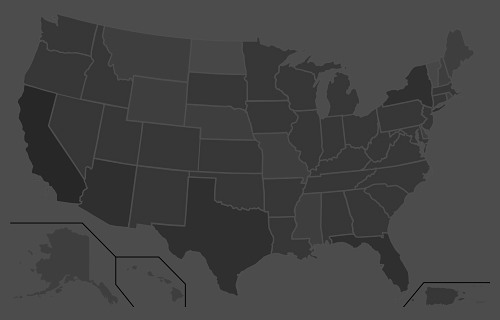“Our added winter moisture and active calling period led to a very long nesting and hatching season, starting in late April and extending into early summer, with chicks hatching as late as early July,” O’Dell said. “From a population standpoint, we are out of a deficit for the first time since 2001-2002. Quail are starting to pop up in places they haven’t been seen in a while.
“If you’ve never had the chance to experience what Arizona quail hunting built its name on, then this would be the year to get out and enjoy it.”
Meanwhile, hunters should note that the season for Mearns’ quail doesn’t begin until Dec. 4. It’s summer rainfall that plays a key role in nesting success and population numbers of this species. After a spotty and relatively weak monsoon across southern Arizona, these birds are likely to be abundant only in pockets that received sufficient precipitation this summer.
A valid Arizona hunting or combination hunt and fish license is required for all hunters 10 and older. Those hunters under 10 must either have a valid hunting or combination hunt and fish license, or be accompanied by an adult who possesses a valid hunting or combination hunt and fish license. Licenses can be purchased online or at license dealers statewide. A youth combination hunt and fish license (ages 10 to 17) is $5.
The general bag limit is 15 quail per day in the aggregate, of which no more than eight may be Mearns’ quail (when the Mearns’ season opens Dec. 4). The general possession limit is 45 quail in the aggregate after opening day, of which no more than 15 Gambel’s, scaled or California quail in the aggregate may be taken in any one day. After the opening of the Mearns’ season, the 45-quail possession limit may include 24 Mearns’ quail, of which no more than eight may be taken in any one day.
More quail-hunting information can be found on the department’s website at https://www.azgfd.com/Hunting/. Another resource for both new and experienced hunters alike is “An Introduction to Hunting Arizona’s Small Game.” Written by Randall D. Babb, the 196-page, full-color book covers where and how to hunt small game birds (like quail), squirrels, rabbits, ducks and geese. It also includes how to prepare and cook your harvest, with illustrations and recipes. The book can be ordered for $16.95 at www.azgfd.gov/publications.
Finally, hunters should check out O’Dell’s techniques for field-dressing quail at https://www.youtube.com/watch?v=3gRwZAcWzzk.
####
Publishers Notes: OUT OF STATE HUNTERS, FISHERMEN & OUTDOOR ENTHUSIASTS; Due to the Covid 19 pandemic, there could be limitations for OUT of STATE hunters, fishermen and other outdoor enthusiasts to include a 14-day quarantine requirement or negative COVID-19 testing alternative. Please check with the State's Department of Natural Resources BEFORE you travel or apply for the 2020 Fall Hunts.
Disclaimer: The views expressed on this site are that of the authors and not necessarily that of TBC Press
ODFW Extends Red Abalone Closure, Delists Borax Lake Chub
Submitted by: TBC Press
Posted on: 02/15/21
The Backcountry Press
The country's premier daily HUNTING, FISHING & OUTDOOR news in the USA and around the globe. Read whats happening in your neck of the woods & beyond.
© 2020 TBC Press - All Rights Reserved Website Design by:
News # 14217
The Commission also removed Borax Lake Chub from the State List of Threatened and Endangered Species while directing staff to consider adding it to the State Sensitive Species List. Borax Lake chub are a unique minnow found only in Oregon’s Borax Lake and its surrounding wetlands (in the Alvord Desert of Harney County).
Threats to their habitat, the primary reason for listing, have been addressed or removed thanks to natural resource agencies and their partners. Borax Lake Chub were downlisted from “Endangered” to “Threatened” on the State List in April 2017 and formally removed from the Federal ESA list in July 2020.
Finally, Commissioners appointed several people to the Commercial Fishery Permit Board (see list online in Draft Motion section of agenda item). The Board reviews limited entry permit renewal and transfer denials made by ODFW for certain commercial fisheries.
Commissioners also heard an update on the population status of lower Columbia River white sturgeon and a review of 2020 sturgeon fisheries.
A taped recording of the online meeting is available on YouTube at https://www.youtube.com/watch?v=_lmlsIjCN7g&feature=emb_logo
The Commission’s next meeting is March 19.
####
Publishers Notes: Our country is still battling COVID-19. To avoid the spread of this virus and continue to enjoy outdoor activities, ALL outdoor enthusiasts (man, woman, child) should follow the guidelines set by nps.gov. These guidelines include; social distancing, the Leave No Trace principles, including pack-in and pack-out, to keep outdoor spaces safe and healthy.
Oregon’s Fish and Wildlife Commission voted unanimously to extend the current closure of the recreational abalone fishery for three years as a precaution.
Recent surveys show a continued trend toward decline in Oregon’s population of red abalone due to poor environmental conditions. Extension of the closure will allow time to monitor habitat conditions and conduct additional underwater surveys to assess changes in the index populations located along the southern Oregon coast.
The three-year extension will also allow time to make progress toward an improved understanding about the abalone populations in Oregon and a regional management framework for the recreational abalone fishery.












